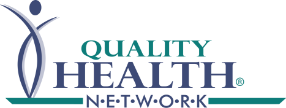Innovation to improve patient care is happening across the western slope of Colorado. Throughout our area, there are many examples of people coming together with a common vision of improving patient care and lowering healthcare costs.
In March of 2015, Rocky Mountain Health Plans (RMHP) in collaboration with QHN and numerous community partners including, long-term care, home health, Mesa County Health Department, Mind Springs Health, the Department of Health and Human Services, Hospice and family medicine providers participated in a pilot to evaluate the QHN care coordination tool. The tool unites the multiplex of care team members in active patient management across the continuum of care.
Primary pilot outcomes:
- Positive patient identification: accurate patient identification utilizing the QHN Master Patient Index (MPI)
- Inclusive care team identified: entire community care team identified including direct healthcare providers and all community ancillary and social support services
- Alert notification: entire care team received patient alerts, facilitated by QHN, when patient admitted to ED or admitted or discharged from inpatient setting
- High level communication between and among care team: all members of care team where able to communicate via the tool, saving time and staff resources
Shared Patient Notes and Alerts Support Transitions of Care Communication
Improving communication among the community partners involved in a patient’s care was one of the primary goals of the pilot. “To be able to identify the care team across the medical neighborhood and facilitate communication between all those players to reduce the duplication of efforts is a big win,” said Lori Stephenson, Director Clinical Program Development & Evaluation, RMHP. “The participants in the pilot feel that it has given them more immediate information on patients that are in a transition of care and they are receiving the information in a way that is more actionable.”
James Wheeler, a Community Health Worker at Whole Health Management manages several clients that have in excess of 60 ED visits per year and coordinates multiple community agencies that support his client case load. “The immediate alert messages, sent to the entire care team via this tool has streamlined the communication, increased the quality of care, and definitely improved follow-up in transitions of care,” stated Wheeler. “With this tool we can much more effectively collaborate with the Department of Health and Human Services, the physicians’ offices and the RMHP team.”
Communication via the Care Coordination Tool Saves Staff Time and Resources
Coordinating care for complex patients with chronic health conditions focuses far beyond improved access to and coordination of medical services. This group of patients often require more intensive medical services coordinated across multiple providers, as well as a wide range of social supports to maintain health. They frequently rely on such social services as accessible transportation or home-delivered meals provided by community based organizations. Given the complexity of their health problems, they are also more likely to suffer from chronic, progressive illnesses requiring home or palliative care, further expanding the range of potential services that must be coordinated to optimize quality of life.
“Using this tool has allowed us to free up a lot of time, because we communicate through the tool, not a string of emails and phone calls. It’s really sped up the communication process,” said Tonjia Tweedy, RN Intake Coordinator, Care Management, RMHP. “This tool brings in and integrates the broader community ancillary/social supports into alignment so the patient is the one gaining from that increased communication. Its a great communication tool, I can’t stress that enough because that’s what’s missing in our area, where every hospital is on a different EHR and the practices all use different EHRs as well – this tool just bridges that communication gap.”



